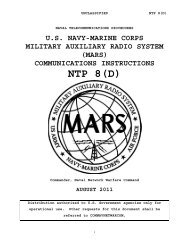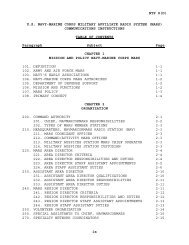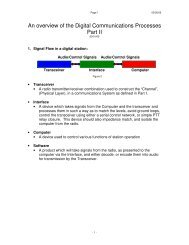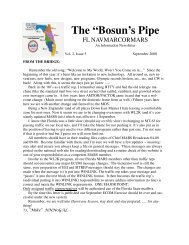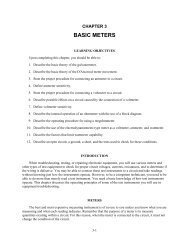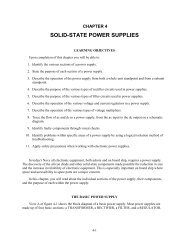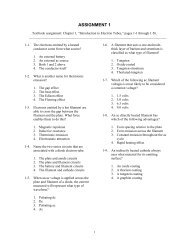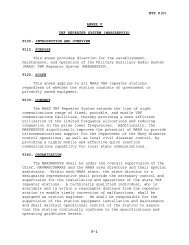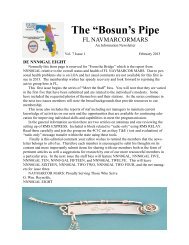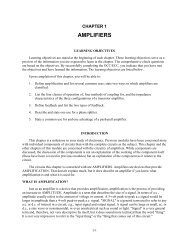Peak Current RatingThe maximum instantaneous current that a tube can pass in the normal direction (cathode to plate)without damage is called the PEAK CURRENT RATING. Peak current rating is determined by theamount of electrons available from the cathode and the length of time plate current flows.Peak Voltage RatingThis is the maximum instantaneous voltage that can be applied to a tube in the normal directionwithout a breakdown.Peak Inverse Voltage RatingThis is the maximum voltage that can be applied to a tube in the reverse direction (plate negativewith respect to the cathode)-exceeding this will cause arc-over from the plate to the cathode and willdamage the tube. PIV, as this is sometimes abbreviated, becomes very important in the rectifier circuit tobe discussed as a later major subject.Transit TimeThings that happen in electricity and electronics are often explained as if they happeninstantaneously. As fast as electricity acts, however, the truth is that cause and effect are separated by acertain amount of time.Each tube has a factor called TRANSIT TIME, which is the time required for an individual electronto move from the cathode to the plate. In certain applications involving high-frequency voltages, transittime places a limitation on tubes. We will explain this limitation when we discuss the circuits it affects.Summary of Diode Parameters and LimitationsYou should now have a basic understanding of diodes, many of their characteristics, and some oftheir limitations. One of the more important concepts that you should now understand is that most ofthese characteristics influence each other. For example, practically all plate characteristics areinterrelated. Change one and the others change. Another example is heater voltage. Every tube parameteraffected by the cathode depends on proper heater voltage. Interrelationships such as these makeelectronics both fascinating and, at times, frustrating.Many of the limiting factors that we have discussed are the same ones found in other electricaldevices such as motors, stoves, toasters, and so on. Heating and overheating, insulation breakdown, andexcessive voltage and current are all limitations that you have noted before.The point is that you can and should apply just about everything you have learned about electricity toelectron tubes. Little is new except the environment.Q12. A large negative voltage is applied to the plate of a diode, and a large positive voltage isapplied to the cathode. If the tube conducts, what tube parameter has been exceeded?THE TRIODEDiode electron tubes can be used as rectifiers, switches, and in many other useful applications. Theyare still used in Fleming's original application in some radio circuits. You will learn more of these1-18
applications in other NEETS modules and later will see the diode in several pieces of electronicequipment.As with all inventions, Fleming's diode was immediately the subject of much experimentation andmany attempts at improvement. An American experimenter, Dr. Lee De Forest, added another activeelement to the diode in 1906. He was trying to improve the radio application of Fleming's diode. His newtube was eventually called a triode.DeForest's triode was not very successful as a radio "detector." (Detectors will be studied in a laterNEETS module.) However, in 1912, De Forest discovered that his original triode could AMPLIFY ormagnify very weak electrical impulses. It is because of the triode's ability to amplify that De Forest ishonored as one of the great radio pioneers.The immediate application of the triode amplifier was in telephone and radio. Both fields werelimited because electrical impulses (signals) became weaker and weaker as the distance from the signalsource increased. The triode, along with other developments of the time, made long-distancecommunications possible. Looking back, we can now see that the amplifying tube was the real beginningof modern electronics and influenced everything that followed. Let's find out more about the idea ofamplification and how it is done in the triode.You are already familiar with a type of amplification. In a previous NEETS module, step-uptransformers were discussed. You should remember that an input voltage applied to the primary of a stepuptransformer is increased in amplitude at the secondary by a factor determined by the step-up turnsratio.For example, if 5 volts were applied to the primary of a 1:3 step-up transformer, the secondary wouldproduce 15 volts. In other words, the input voltage was amplified by a factor of 3. When applied toelectronic circuits, these primary and secondary voltages are more often called signals, or input andoutput signal, respectively. In electronics, the amplitude of an input signal must sometimes be increasedmany times-often, hundreds or thousands of times!Because of size and design limitations, transformers are usually not practical for use in electronics asamplifiers.DeForest's first experiment with the diode was to place an additional metal plate between the cathodeand plate. He then placed an ac signal on the metal plate. When the circuit was energized, De Forestfound that the ammeter stayed on zero regardless of the polarity of the input signal.What was happening was that the new element was blocking (or shadowing) the plate. Any electronsattempting to reach the plate from the cathode would hit the new element instead. As the circuit didn'twork, it was back to the drawing board.In his next attempt, De Forest decided to change the element between the cathode and the plate.Instead of a solid metal plate, he used a wire mesh. This would allow electrons to flow from the cathode,THROUGH THE WIRE MESH, to the plate. This tube circuit is shown in figure 1-15. In view (A) yousee De Forest's circuit with 0 volts applied to the third element, (today called a control grid oroccasionally just the grid). Under these conditions, assume that the ammeter reads 5 milliamperes. Withno voltage applied to the grid, the grid has little effect on the electron stream. For all practical purposes,the control grid is not there. Most electrons flow through the open mesh. The tube functions as a diode.1-19




